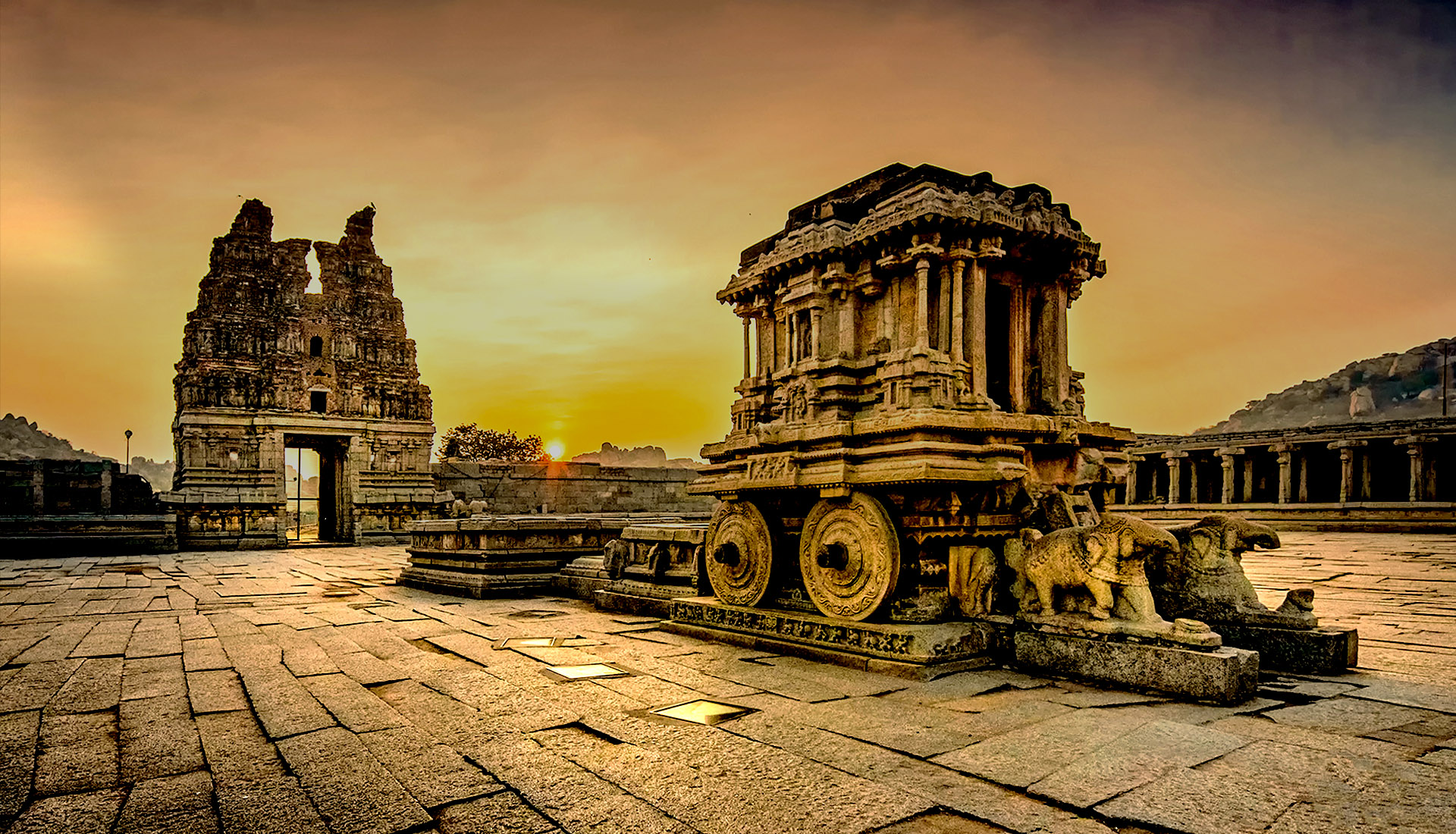Explore the Majestic Group of Monuments at Hampi
The Group of Monuments at Hampi, Karnataka, is unravaged evidence to the grandeur of architecture and the cultural wealth of the Vijayanagara Empire. This UNESCO World Heritage site stretches over 41 square kilometers and boasts more than 1,600 monuments all revealing the glory of a civilization that flourished from the 14th to the 16th centuries. Each stone and structure that you pass en route to Hampi retells another story of its glorious past.
Historical Significance
Once upon a time, Hampi was the capital city of the Vijayanagara Empire, which was known for its wealth and might. Founded in 1336, Hampi flourished under kings such as Krishnadevaraya, who extended its rule and influence. The Group of Monuments at Hampi, Karnataka, encompasses temples, palaces, and market complexes that speak for the numerous architectural innovations and artistic accomplishments made by this empire. Plenty of history is attached to this site; it is said to be connected with the mythical kingdom of Kishkindha spoken of in the
Ramayana.It stands as a memory of Hampi, lying ruined and deserted since the day it was captured by a Hindu coalition of Deccan Sultanates following a disastrous loss at the Battle of Talikota that took place in 1565. With the fall of Hampi, the very course of its history changed.“इतिहास की गूंज यहाँ हर पत्थर में है।” (The echoes of history are in every stone here.)An uncomplicated encapsulation of the idea of Hampi, with each monument telling the tale of victory and tragedy.
Architectural Wonders
The Group of Monuments in Hampi, Karnataka, is a blend of architectural styles with Dravidian being the most prominent. Notable ones include:
- Virupaksha Temple-is one of the oldest temples in India, dedicated to Lord Shiva. It entices thousands of pilgrims thanks to its towering gopuram and exquisite inscriptions.
- Vijaya Vittala Temple-is especially known for its famed stone chariot and musical pillars. This magnificent temple complex is representative of the architectural greatness of the Vijayanagara. Most breathtaking as the sun sets, pouring its golden wash over the structure.
- Lotus Mahal-It is an exquisite structure situated withiad the Zenana Enclosure. This Indo-Islamic structure has arches shaped like lotus flowers. It was a recreational area for the royal women.
- Achyuta Raya Temple-Built in 1534 A.D. it epitomizes Vijayanagara architecture, venerated by the surrounding enchanting hills.
The monuments were not merely strongholds of religion but were loud expressions of faith, power, and art in the empire’s flourishing times. The minute engravings represent scenes of epics like Ramayana and Mahabharata-the celebrated tales to have thrived in this landscape.
Cultural Heritage
Apart from towering architectural works, Hampi was a center of cultural exchanges. These were places of various religions-Hindus and Jains, living side by side in complete harmony. The temples and monuments prove this multi-religious character of Hampi.
This yearly Hampi Utsav rejoices in the cultural heritage with music, dance, and traditional performances that magically describe the spirit of this great ancient city. Guests will also be treated to local art while they sample traditional food in the embrace of ancient edifices. “हमारी संस्कृति की जड़ें यहाँ गहरी हैं।” (The roots of our culture run deep here.) This rings true to every visitor who sets foot on Hampi’s sacred ground.
Hampi’s landscape is soulful as is its monument. Cradled among proud rocky hillocks and lush paddy fields along the banks of the meandering Tungabhadra River, the site presents views so stunning they cast a gauzy spell: marvelous rock formations kissed by ages of flowing lava-turned rock-twisting into surreal landscapes that complement those histories. Trekking is possible atop Matanga Hill for an overview of the whole area or to just jaunt about along the peacetime banks. The peaceful ambiance is good for contemplating everything grand that once was.
Efforts in Conservation
Realizing the historical importance of Hampi, several initiatives have been launched to preserve and protect this great UNESCO World Heritage Site from environmental degradation and urban penetration. Various organizations have commenced to promote sustainable tourism while at the same time ensuring that sustenance for posterity can get the aesthetic beauty of Hampi.“हमें अपने धरोहर की रक्षा करनी चाहिए।” (We must protect our heritage) is a call of consciousness that rings true as we traipse through the modes of development that act on such fragile yet irreplaceable sites, leaving behind discoveries.
Conclusion
The Group of Monuments at Hampi,Karnataka, is a powerful symbol of the rich history and cultural diversity of India, urging many to discover not just the physical remains bound in time but also stories of all the empires that rose and fell, of works of art that were, and of civilizations that have borne witness.While arranging your visit, remember that every nook and corner has a narrative that silently yearns for revelation. Hampi promises a journey taken through time either for history lovers or mere seekers of beauty in ruins.”In summary,
Hampi! When looked at collectively, becomes more than just a place; it becomes an experience and a living testimony to its historical and cultural heritage, thus attracting travelers from the farthest corners of the world to witness its glory in person. Every visit to this UNESCO World Heritage site tells a story etched in time.”


0 Comments